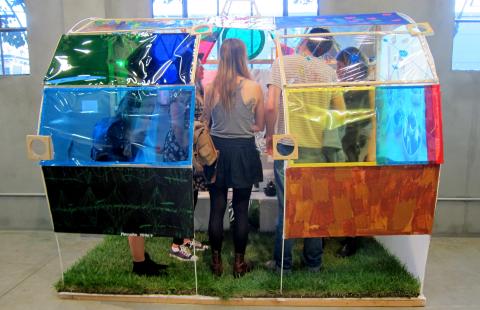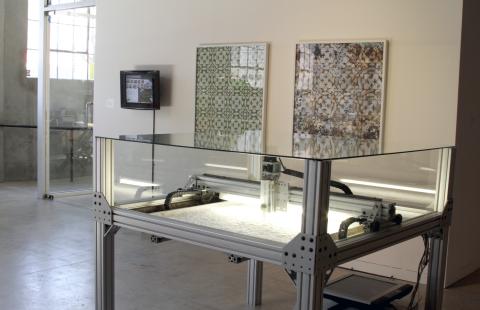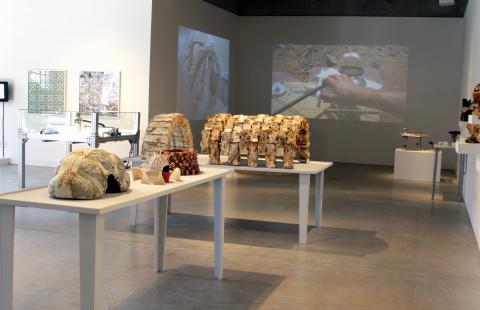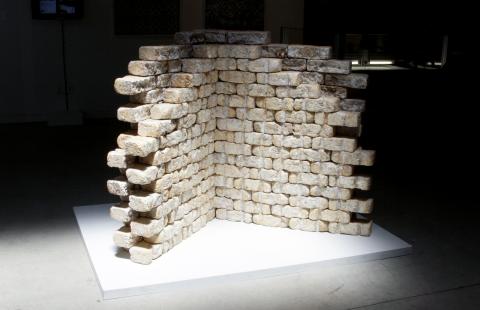Intimate Science
Intimate Science artists:
BCL (Georg Tremmel & Shiho Fukuhara)
Center for PostNatural History
Markus Kayser
Allison Kudla
Machine Project
Philip Ross
Southern Exposure's Youth Advisory Board with teaching artists Victoria Scott and Rebecca Nadjowski
Dates: April 20 - June 2, 2012
Opening Reception: Friday, April 20, 7:00 – 9:00 PM
Gallery Hours: Tuesday - Saturday, 12:00 - 6:00 PM
Intimate Science opens at Southern Exposure on Friday, April 20, 2012. The exhibition, curated by Andrea Grover, was organized by the Miller Gallery at Carnegie Mellon University, and was on view from January 20 through March 4, 2012. The exhibition will travel to Real Art Ways Hartford, Connecticut, and other U.S. locations through 2013.
Intimate Science explores the most recent manifestation of artists working at the intersection of art, science and technology. The exhibitions looks at artist-initiated research in a scientific or technological area, and notes the dramatic shift from artists operating on the periphery of research to conducting research themselves. The artists in the exhibit have a sustained and intimate relationship to their studies and contribute in a meaningful way to cross-disciplinary discourse. They are engaged in non-disciplinary inquiry; they aren't allied to the customs of any single field, and therefore have license to reach beyond conventions. This kind of practice hinges on up-close observation, experiential learning, and inventing new ways for the public to participate in the process.
The exhibition is accompanied by a densely illustrated publication, New Art/Science Affinities (Miller Gallery at Carnegie Mellon + STUDIO for Creative Inquiry, 2011). Co-authored by Grover, Régine Debatty, Claire Evans and Pablo Garcia, designed by Thumb, the book features more than 60 international artists and collaboratives.
- BCL (Georg Tremmel & Shiho Fukuhara, Tokyo) bio-hacks genetically modified flowers — carnations bio-engineered to have a bluish purple color — back into living plants with the intention of creating an “open source” population of these flowers.
- Center for PostNatural History (Pittsburgh) is a project spearheaded by Rich Pell, associate professor of art at CMU, with the objective to advance “knowledge relating to the complex interplay between culture, nature and biotechnology." It is a singular natural history museum that is concerned with "PostNatural” varieties of life normally excluded from scientific taxonomy, such as transgenic organisms that have been altered by humankind via selective breeding, genetic engineering or other methods of biological tampering.
- Markus Kayser (London) takes notions of sustainable micromanufacturing to the extreme through projects like his "SolarSinter," which combines a custom-made 3D printer with solar power to transform sand — on site in the Sahara — into glass objects, and "SunCutter," a low cost laser cutter that makes objects by focusing sunlight into a powerful beam.
- Allison Kudla (Seattle) combines computer fabrication technologies and plant tissue culturing to make living installations, which she describes as biological material in collaboration with an engineering mechanism.
- Machine Project (Los Angeles) is a "not-for-profit arts organization and community event space dedicated to making specialized knowledge and technology accessible to artists and the general public." Machine describes its terrain as encompassing "art, technology, natural history, science, music, literature and food," and more. Machine’s style of presenting promotes hands-on engagement that engineers atypical collisions between different branches of knowledge.
- Philip Ross (San Francisco) works in the realm of "bio techniques." Utilizing living organic materials, he makes sculptural and architectural works with plant and fungal materials, as well as videos about microorganisms. His "mycotecture" series is an experiment using reishi mushrooms as a sustainable construction material.
- At Southern Exposure, Intimate Science includes work by SoEx's Youth Advisory Board (YAB). Since January 2012, teaching artists Victoria Scott, Rebecca Nadjowski, and members of YAB have been actively exploring the connections between art and science and the boundaries of perception. For the exhibition, they have collaborated on a sculpture that elaborates on these investigations.





